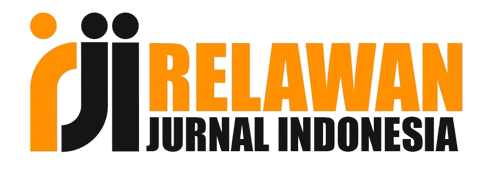Development of Arabic Educational Animation for Tourism in Arabic Education Study Program at IAIN Manado
Abstract
The study aims to develop animated educational media for Arabic for Tourism and to determine its impact on lecture activities in the Arabic Education Study Program. The development of animated education media is necessary to enhance the learning experience and the effectiveness of learning outcomes in the classroom, particularly in the Arabic for Tourism class, which focuses on understanding basic procedures for serving Arabic-speaking tourists and communication processes. It is hoped that the use of video-based media will also increase its utilization as it can be accessed on various devices, anytime and anywhere.
The methodology of this study uses a Research and Development (R&D) basis with the ADDIE approach, which includes analysis, design, development, implementation, and evaluation. The study's test variables consist of two test variables: motivation and interest in learning, with a total of 35 respondents.
The study results indicate that the Arabic educational animation media for tourism, when reviewed by experts, shows that the content and design are rated very good, with an average score of 80-81%, thus meeting expert criteria. Furthermore, during the evaluation, it shows a fairly good effectiveness regarding the variables of motivation and interest in learning. The learning motivation variable has an average effectiveness of 68.6%, and the interest in learning variable has an average effectiveness of 68.9%, thus being considered quite good in the evaluation results of the Arabic language learning animation media for tourism.
Keywords: educational media, Arabic language, tourismKeywords
Full Text:
PDFReferences
Bahasa dari Negara Ini Ternyata Paling Sulit Dipelajari. (n.d.). Retrieved August 29, 2024, from https://www.idntimes.com/travel/tips/fasrinisyah-suryaningtyas-1/bahasa-negara-ini-paling-sulit-dipelajari
Chen, B. H., & Chiou, H. H. (2014). Learning style, sense of community, and effectiveness in the hybrid learning environment. Interactive Learning Environments, 22(4), 485–496. https://doi.org/10.1080/10494820.2012.680971
Curtis, J. B., & R, G. C. (2006). The Handbook of Blended/Hybrid Learning. Pfeiffer.
Daeng Pawero, A. M. V. (2018). Analisis Kritis Kebijakan Kurikulum Antara KBK, KTSP, dan K-13. Jurnal Ilmiah Iqra’, 12(1), 42. https://doi.org/10.30984/jii.v12i1.889
Farihah, I., & Nurani, I. (2017). Internalisasi Nilai-Nilai Keislaman Dalam Skema Hidden Curriculum Di Mts Nurul Huda Medini Demak. Edukasia : Jurnal Penelitian Pendidikan Islam, 12(1), 213–234. https://doi.org/10.21043/EDUKASIA.V12I1.2347
Goodyear, P. (2020). Design and co-configuration for hybrid learning: Theorising the practices of learning space design. British Journal of Educational Technology, 51(4), 1045–1060. https://doi.org/10.1111/bjet.12925
Indrajit, R. E. (2016). E- Learning dan Sistem Informasi Pendidikan: Modul Pembelajaran Berbasis Standar Kompetensi dan Kualifikasi Kerja (2nd ed.). Preinexus.
Ramli, R. (2020). Reorientasi Pengajaran Bahasa Arab. Naskhi: Jurnal Kajian Pendidikan Dan Bahasa Arab, 2 (1), 1–7.
Richards, J. C., & Renandya, W. A. (2002). Methodology in Language Teaching: An Anthology of Current Practice. Cambridge University Press.
Riyana, C. (n.d.). MEDIA PEMBELAJARAN. KEMENAG RI.
Rosyidi, A. W. (2009). Media pembelajaran bahasa Arab. UIN-Maliki Press. http://repository.uin-malang.ac.id/1516/
Rozak, Abd. (2018). Modernisme Pembelajaran Bahasa Arab Berbasis Pesantren di Rangkasbitung Banten. Journal of Arabic Studies, 3(2), 167–180.
Sadiman, A. S. (2008). Media Pendidikan. Rajawali.
Sudjana, N. (2005). Media pengajaran (penggunaan dan pembuatannya) / oleh Nana Sudjana, Ahmad Rivai (Cet. ke-2). Sinar Baru.
Shachar, H. (2003). Who Gains what from Cooperative Learning: An overview of eight studies. Routledge.
Sugiyono. (2008). Metode penelitian pendidikan: (Pendekatan kuantitatif, kualitatif dan R & D). Alfabeta.
Susanti, E., Harta, R., Karyana, A., & Halimah, M. (2018). DESAIN VIDEO PEMBELAJARAN YANG EFEKTIF PADA PENDIDIKAN JARAK JAUH: STUDI DI UNIVERSITAS TERBUKA. Jurnal Pendidikan dan Kebudayaan, 3(2), Article 2. https://doi.org/10.24832/jpnk.v3i2.929
Suyanto, A. H. (2005). Mengenal E-learning. Universitas Gadjah Mada.[On-Line]. Tersedia: Http: Www. Asep-Hs. Web. Ugm. Ac. Id.
Victor, B. (n.d.). Character Education, Prevention and Positive Youth Development. University of Missouri.
Washington, E. (2020). Human resource management and organizational behavior and competencies at work provide a common language for talent management. Business Expert.
Yaumi, D. M. (2018). Media dan Teknologi Pembelajaran. Prenada Media.
DOI: http://dx.doi.org/10.30984/jii.v18i2.3297
Article Metrics
Abstract view : 85 timesPDF - 39 times
Refbacks
- There are currently no refbacks.
Rumah Jurnal Institut Agama Islam Negeri Manado
Jl. Dr. S.H. Sarundajang, Kawasan Ringroad I, Malendeng Manado Kode Pos 95128, Sulawesi Utara, Indonesia.

All publication by Jurnal Ilmiah Iqra' are licensed under a Creative Commons Attribution-NonCommercial-ShareAlike 4.0 International License.
Jurnal Ilmiah Iqra', ISSN 1693-5705 (Print), ISSN 2541-2108 (Online)




